BBQ: step by step instructions for making
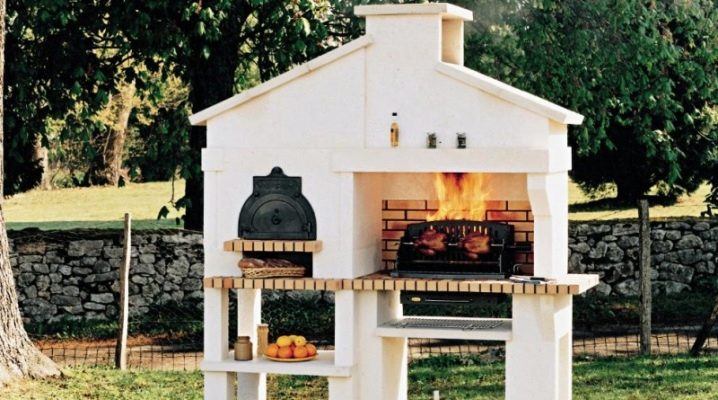
The barbecue design ideally combines the best qualities of a barbecue, grill and smoking chamber. There is a huge variety of her models. Many barbecues can be made on your own by following the step-by-step manufacturing instructions.
Features and purpose
The basis of the barbecue design is a box, inside of which there is a tray for charcoal, a grill for cooking food. The high bumpers protect the heat from blowing out, and it keeps the temperature warm by heating the bumpers themselves.
This kind of design allows not only to speed up the cooking process, but also ensures uniform frying, and also prevents overdrying and burning of food.

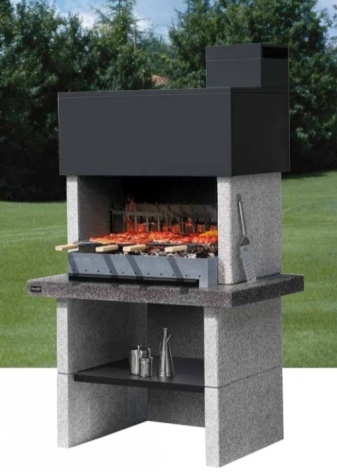
The indisputable advantage of a barbecue is its versatility. both in terms of design and in terms of the possibility of preparing various dishes and products. On it you can cook not only kebabs, wings and any kind of meat, but also more ordinary everyday dishes from soup to baked fish. In addition, it is ideal for quick drying of mushrooms and fruits. A homemade grill in the country will certainly become an irreplaceable thing. To make it yourself, you need to choose suitable projects, drawings and follow the advice of specialists.
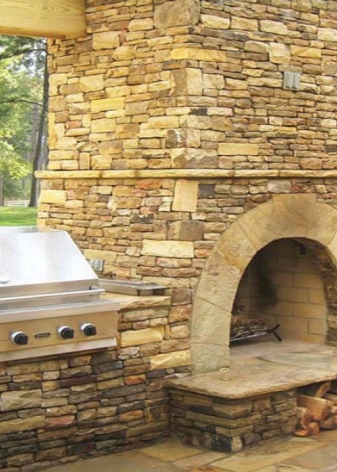
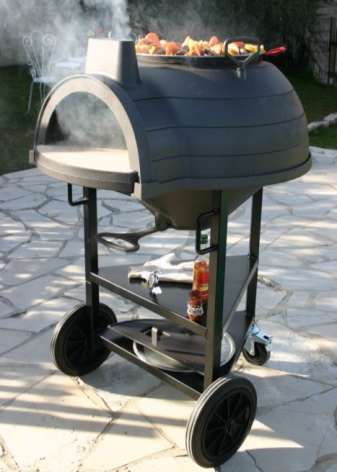
Varieties
All barbecue models are divided into two options.
- Mobile models can be folded, easily carried, they are small in size and light in weight;
- Stationary models - these are barbecue ovens built of brick or stone. They are large in size and almost all models require installation on a foundation.
Mobile barbecues are made of bricks, laid out without the use of mortar. These street models are easy to assemble by yourself, disassemble and reassemble. Designing in such structures is not very difficult. Stationary barbecues are usually brick or stone. The functionality of such a barbecue is limited only by its design.
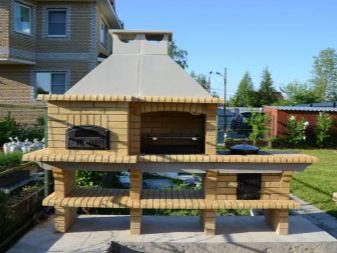
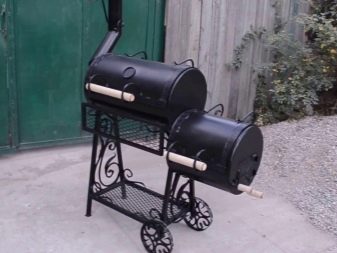
The simplest mobile barbecue is the disposable one. Its structure consists of a coal pan and a thin grate. Since it is made of a thin type of tin, the pallet burns out after the first use. There are many foldable models that fit in a small plastic suitcase for easy transport. Their design is very simple, consisting of a brazier and a grate.


A more complex model is a BBQ cauldron. This original American version is made from chrome nickel. In appearance, it looks like a cauldron or a deep frying pan, presented on three stable legs and complemented by a dome-shaped lid. At the bottom there is a rounded tray that is suitable for plates and other auxiliary utensils. Thanks to such a device and the presence of a lid, it can be easily used as an oven or smokehouse.
The barbecue trolley has a fixed or folding surface.
Hibachi is a round cast iron model with stable legs and a height-adjustable grate.

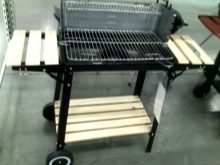

The electric barbecue is convenient for indoor use in the kitchen. A gas barbecue is a whole complex that contains the basic functions of a barbecue and grill. Such models are more suitable for use in the catering industry.They are very massive, weighing about 60 kilograms, which refers them to a greater extent to stationary models.
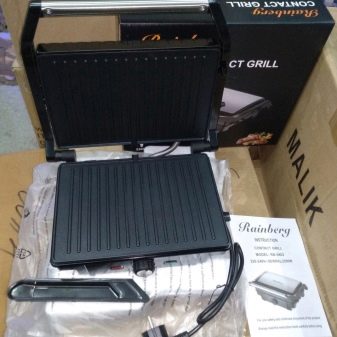
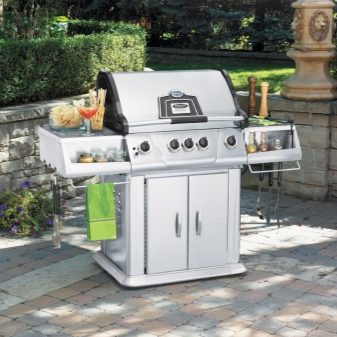
Any model has many additional elements, which makes it more comfortable to use.
These include the following:
- built-in mechanical and automatic spit;
- an open firebox area of increased size, due to which a variation of a garden fireplace is easily created;
- grill designed for frying food;
- a place for installing a cauldron, which allows you to cook a large number of various culinary masterpieces in the fresh air;
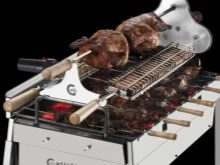
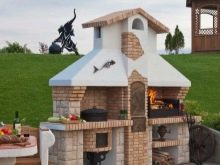

- separate area for barbecue;
- a construction for cooking barbecue;
- cooking and working surfaces;
- smoking chamber and more.
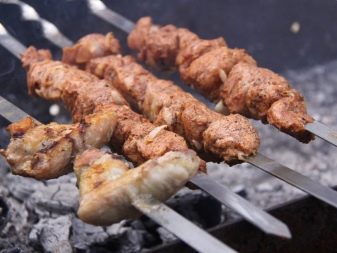
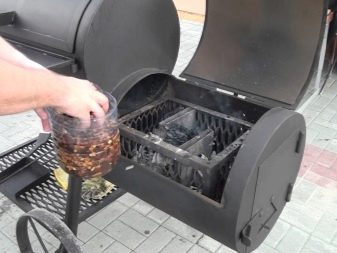
Manufacturing materials
The basis for a barbecue is metal, natural stone, brick, foam block and high quality concrete. The main requirements for materials of manufacture are their resistance to stress and high temperature. For the exterior decoration of the barbecue oven, there is a large selection of materials (natural stone, porcelain stoneware, shell rock). The barbecue structure can be made independently from cinder block, blocks and foam blocks.
The construction from an ordinary barrel looks original.
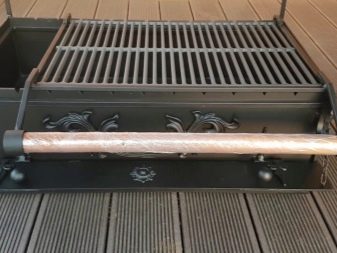
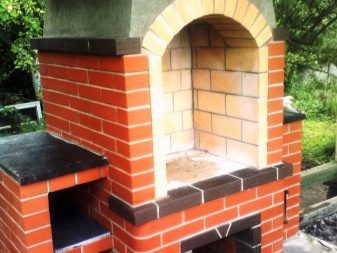
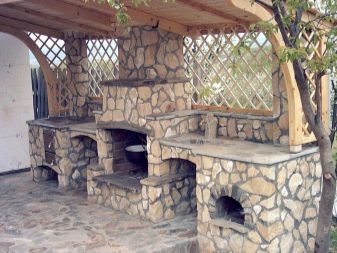
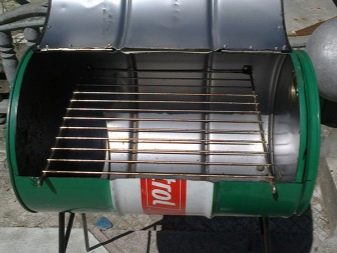
Where to place?
The correct placement of a barbecue is not only a matter of convenience and beauty, but above all safety.
The basic requirements for the location of the barbecue are the same for all models, namely:
- Smooth surface;
- there should be no flammable objects (buildings, plants, cars, etc.) nearby;
- distance from the residential building by 5-15 meters;
- providing protection from rain under a canopy or roof;
- wind rose (the direction of the smoke should be in the opposite direction from the residential building).
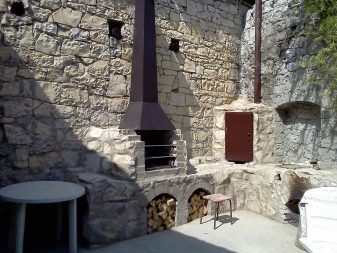
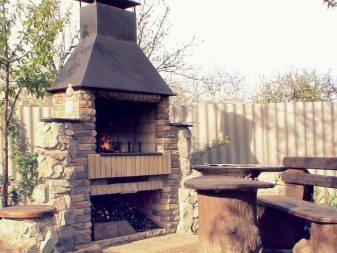


Do not forget that the intense heat from a barbecue can harm any vegetation, so you do not need to place it surrounded by flower beds or garden beds. Not only the appearance of the landscape will suffer, but also the harvest. And also it is better to think in advance about the path to the barbecue from the house and the recreation area.
Dimensions (edit)
Requirements for any type of barbecue are standard.
- The minimum distance for the brazier should be 70 to 80 centimeters.
- The location of the stove is always 10 centimeters below the level of the brazier.
- A place to store firewood and tongs is required.
The final height of the brazier, hob, cutting table surfaces and additional shelves is calculated based on the height and convenience for the owner.
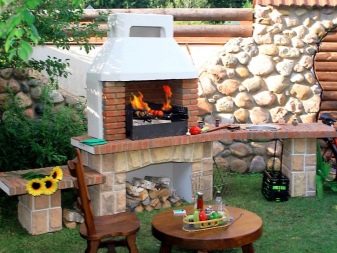

The simplest barbecue models are equipped with a hob and work surface. They can also be erected on their own. The dimensions of such a complex are 1210 mm deep, 2240 mm wide and 1900 mm high.
The simplest model of a barbecue oven is assembled with ordinary brickwork, which has a standard size. The height of such a furnace corresponds to 13 rows (about 702 mm each), it is specified based on the thickness of the seam. The perimeter of the structure corresponds to the basis of 1810x900 mm. Even an inexperienced builder can build such a structure.
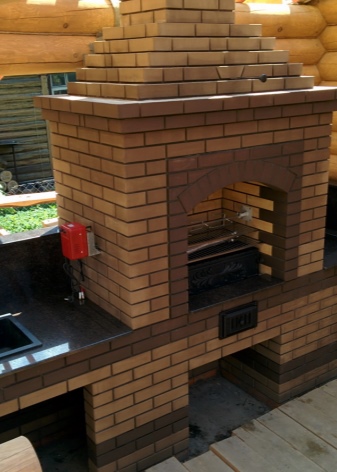

The model of a barbecue oven with a hob will require basic oven masonry skills. The dimensions of such a structure have the following standards: depth 1778 mm, width 434 mm and height 1900 mm.
When building such a barbecue, the type of Dutch masonry is used.
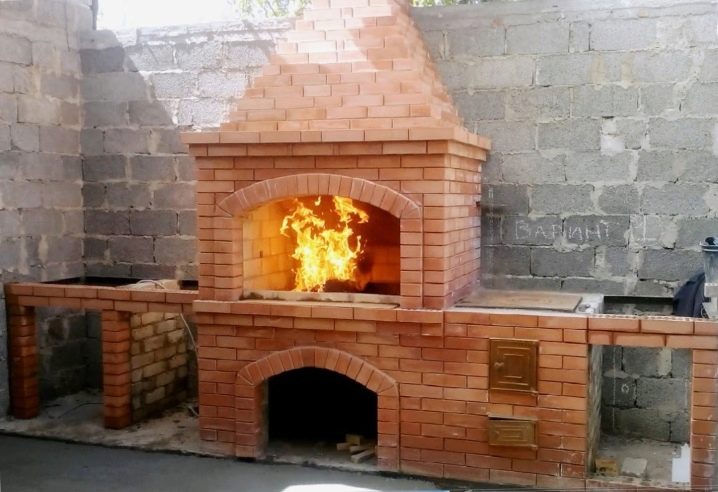
How to do it yourself?
For self-construction of the simplest barbecue oven, you will need materials such as:
- about a hundred bricks;
- Metal sheet;
- lattice.
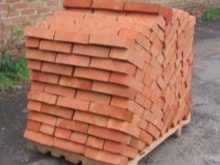
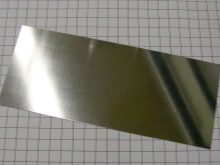

With your own hands, the installation of the structure and the cladding occur in a certain sequence.
- on a flat stable surface with a perimeter of 1x1 meter, the first row is laid out. The shape of the future barbecue can be square, round or polygonal. The choice is limited by the desire of the designer;
- in the first row, bricks are placed at a distance of about 5 centimeters from each other;
- the rest of the rows of bricks are laid out in a checkerboard pattern using the same technology;
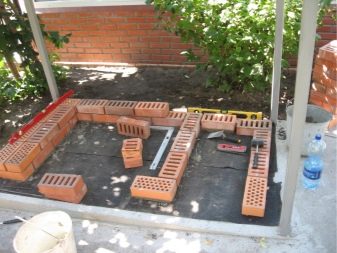
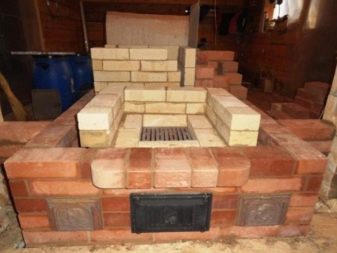
- the number of rows is calculated from the desired height of the brazier;
- a sheet of metal is placed on the resulting base, on which the coal will lie. On top of it, another 2-3 rows of bricks are laid according to the same principle;
- then gratings and two finishing rows of bricks are installed.
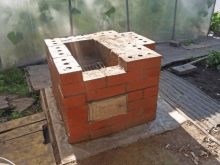
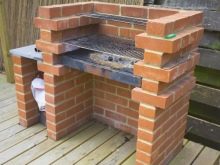
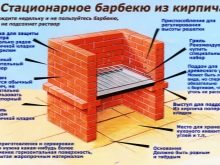
This structure is assembled without the use of mortar., which ensures ease of assembly. It does not require any special building skills and takes a minimum of time.
The erection of a more solid structure requires laying a foundation, the size of which depends on the dimensions of the future barbecue plus 30 centimeters around the perimeter. They are calculated based on the size of the firebox and the availability of additional structures. Building a barbecue yourself is a snap if you follow the recommendations of the experts.
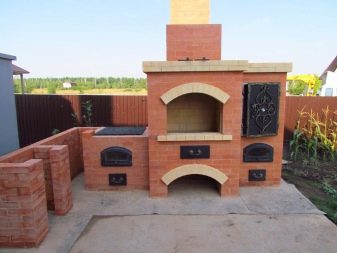
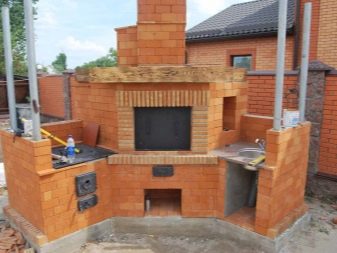
There are three foundation options.
- Finished reinforced concrete slab. At the bottom of the excavated pit, a layer of sand and gravel cushion about 5 cm thick is laid, on which a reinforced concrete slab is placed. The depth of such a pit is calculated based on the width of the slab plus the layer of the pillow. This option will take little time, but it has significant inconveniences due to the need for a crane to lay the slab, the shrinkage of the pillow may turn out to be uneven.
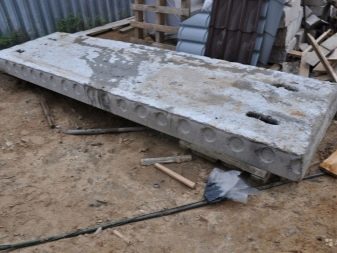
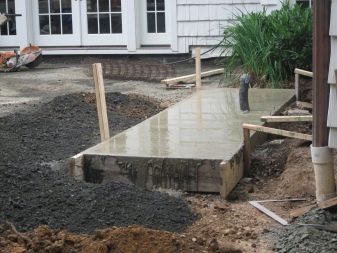
- A slab foundation is a more reliable option. Its peculiarity lies in the fact that a reinforced concrete slab is poured in place directly in the pit. The technology is simple: a pit is dug about 35 cm deep, a layer of sand and gravel cushion is laid, the formwork is mounted, a reinforcing cage is made and concrete is poured.
- The most common and reliable option is a strip foundation. For the construction of a barbecue, it is not placed in a U-shape, but along a closed circuit. For it, a pit is pulled out with a depth of about 50 cm, a layer of sand and gravel cushion about 15–20 cm thick is made, and a reinforced concrete base is poured.
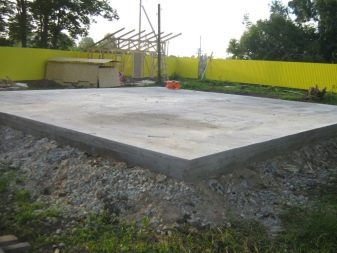

The choice of the foundation option depends on the type of soil on which the construction will be. After choosing the construction site and foundation, you can start building a barbecue. Folding a traditional-style barbecue is easy. This design does not require any special skills.
The first step is passed, the place for the barbecue is selected, the foundation is poured and it remains to wait until it hardens completely (up to about 3 weeks).
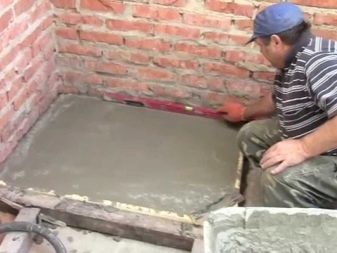
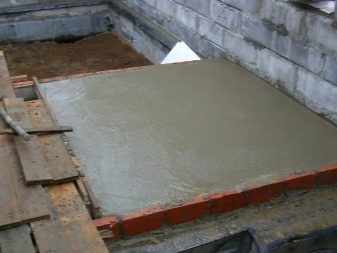
The second step begins with the preparation of building materials. For the construction of a barbecue, two types of bricks are used: refractory and facing. Refractory (fireclay or solid) brick is used for laying the firebox. Subsequent parts of the structure are laid with facing bricks (it is possible to use other materials, both block and natural origin). Bricklaying requires less skill and is more affordable for DIY barbecues. Previously, shortly before the start of laying, the entire brick is soaked in water.
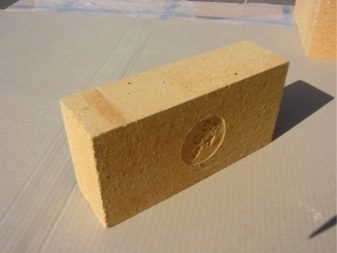
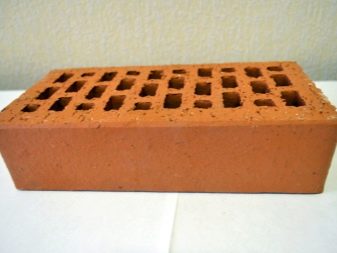
The third step is erection. Before starting laying work, check the horizontalness of the foundation using a level. If errors are found, they are corrected when laying the first two rows using the thickness of the mortar. A waterproofing layer is mandatory on the foundation. Roofing material or other roll materials are used as it. During construction, an ordering scheme is used. It is calculated on the basis of a standard brick size of 230x114x65 mm. When laying the firebox and stove, a clay solution is used, for further laying - an ordinary mortar. Fireclay solution is mixed in advance from sand, red clay, water and cement.

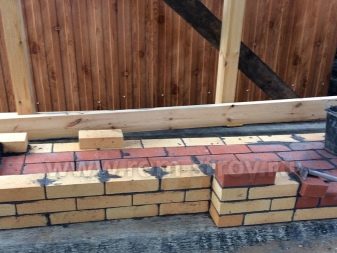
When the construction of the furnace is over, it is necessary to burn its inner surfaces. To do this, charcoal or wood is kindled in the firebox, bringing it to the maximum temperature.
After heating the stove, it should be dried. The best option for her is a warm summer period, then it will take at least 5 days.If drying is carried out in cloudy autumn weather - no more than 20 days. In any case, it is worth taking care of protecting the barbecue oven from rain and covering it. The final stage remains - this is glossing. The bricks are cleaned of mortar residues and painted so that the seams are emphasized. Now you can start operating.
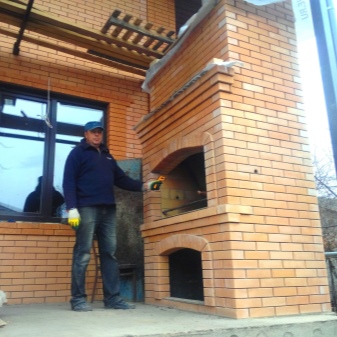
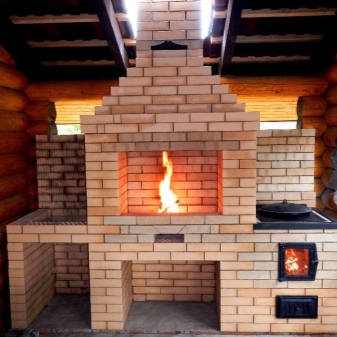
There are unusual options for making metal barbecues yourself. It should be noted right away that their design is also limited by the desire, possibility and imagination of the manufacturer. One of these options is a barbecue from a gas cylinder. This is a very economical and affordable option, but it requires experience with a welding machine and a grinder.
From an old empty gas cylinder, you get a barbecue with a length of 120 cm. If desired, it can be reduced by cutting off unnecessary centimeters and welding it along the cut. Such a barbecue, even the simplest one from one gas cylinder, turns out to be weighty, therefore it is unsuitable for transportation, but due to the design of the legs, it can be made both stationary and portable.
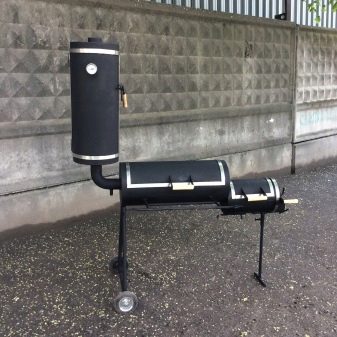
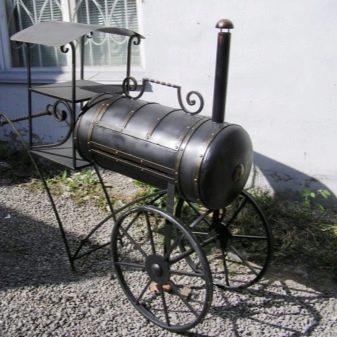
The main advantage of this design is simplicity and speed of manufacture, since it will take no more than 2 hours. Due to the thickness of the cylinder walls, this option is characterized by increased wear resistance. The design is able to withstand high temperatures.
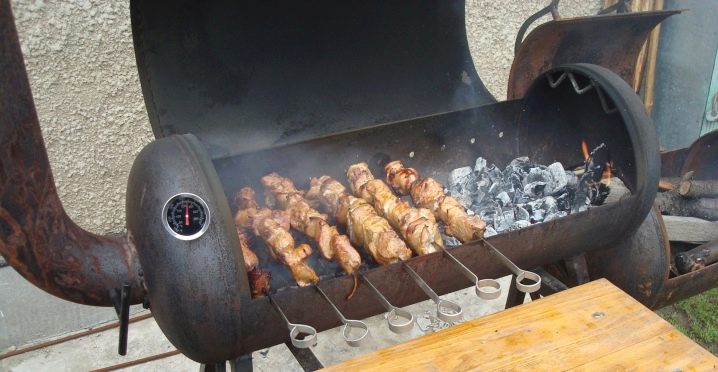
Regarding the rationality of making such a barbecue, disputes arise about the safety of the products cooked in it, since gas residues could remain on the walls of the gas cylinder. Therefore, you should think about safety right away and before use, the structure must be thoroughly washed and heated several times. After this treatment, the barbecue is suitable for the safe preparation of food. Before starting work on the gas cylinder, make sure that it is empty.
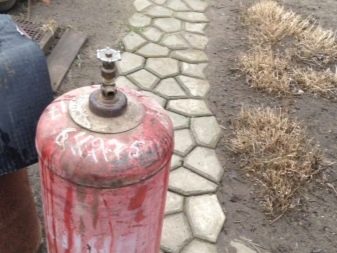
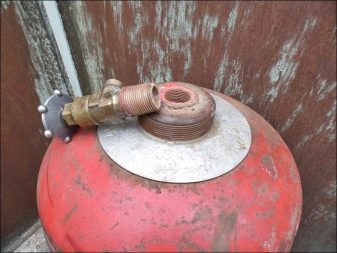
To remove the remaining gas from the cylinder, it is placed upside down and the valve is unscrewed to the end. This trick is very effective because the density of the gas is greater than the density of the air, so it will escape faster. To test the gas outlet, you need to soap its neck.
If the gas comes out, then bubbles will form, in order to finally confirm the emptiness of the cylinder, it is filled with water.
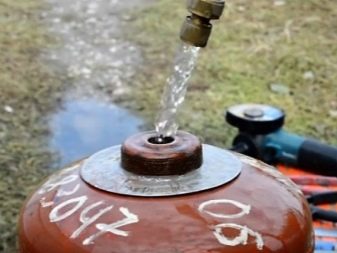
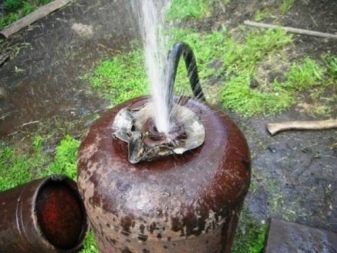
A step-by-step description of the instructions for converting a gas cylinder into a barbecue.
- A standard fifty-liter bottle is taken, there is a production seam on it, along which a cut is made. For this, a grinder and an edging wheel for metal are used. The side walls, meaning the bottom and top of the cylinder, remain intact, otherwise it will harm the brazier. As a result of the cut made, the cylinder was divided into two parts: one of them is the base for the barbecue, the other is the lid.
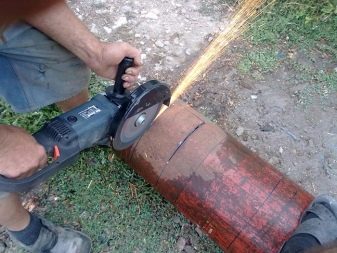
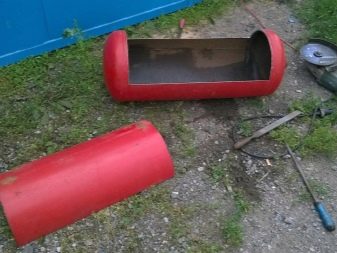
- By means of welding, the hinges are fixed, initially fixed to the rivets made of aluminum.
- Heat-resistant metal handles are attached to the barbecue lid.
- Metal corners of 32x32 mm are welded along the perimeter of the hole in the cylinder, which will serve as a support for the skewer. The same is done with the inside of the lid. The corners will prevent deformation in the cuts.


- Barbecue legs are welded. If it is stationary, then the legs are fixed with concrete for greater stability. If it is thought of as portable, then wheels or small pins can be attached to the legs for drowning in the ground.
- To provide traction, small holes are drilled throughout the bottom of the case.
- Finishing of seams and cleaning of interior wall surfaces.
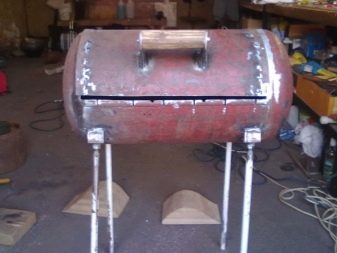
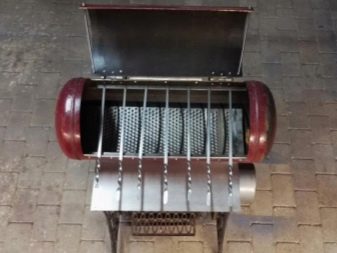
Operating rules
Any thing requires proper and timely care. To avoid unpleasant consequences, you should follow the operating rules.
All structural parts should be cleaned in a timely manner, namely:
- the grate, doors and subsequent parts of the stove should be cleaned of dirt and soot every time after using it, after waiting for the stove to cool completely;
- the furnace pipe must be cleaned of soot at least 2 times a year;
- empty the hearth of burnt coal and food debris after each use;
- it is necessary to check the firebox for the presence of accumulated water or snow in the absence of a head in the chimney or a canopy over the chimney.

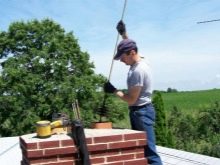
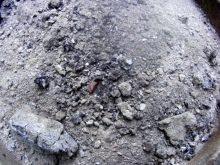
Experts recommend strictly following the following safety rules:
- constant monitoring of the intensity of the flame is required;
- no flammable items near the stove.
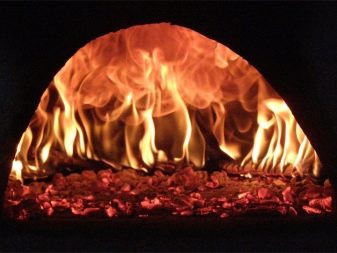

In the case of using ignition means, it is worth remembering that:
- it is allowed to use only starters, strictly observing their instructions for use;
- the use of gasoline, kerosene and other lubricants is strictly prohibited;
- cover the barbecue with a lid at least 15 minutes after lighting in order to avoid igniting the accumulated combustible gas;
- in no case should the wood be impregnated with such means, only spray it to ignite.
In the cold season, barbecue at the beginning of use must be dried for 20 minutes over low heat. This will prevent premature wear and the appearance of cracks in the furnace structure from a sharp temperature drop.
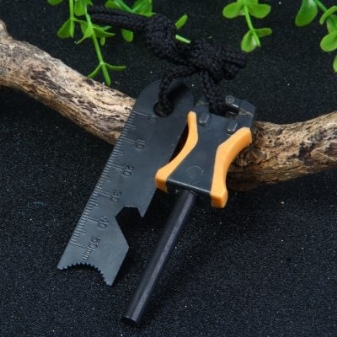
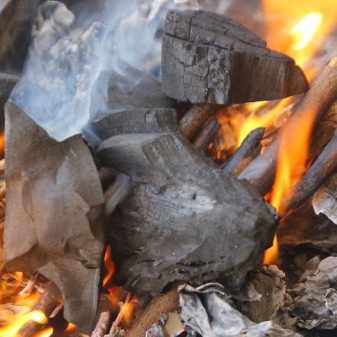
Examples of finished structures
- When building a barbecue, an ordering scheme is used. It is based on a standard brick size of 230x114x65 mm.
- A mobile barbecue made of bricks, laid out without the use of mortar, is easy to assemble by yourself and, if necessary, disassemble and reassemble. This design is suitable for corner models.
- One of the unusual barbecue models, made from a gas cylinder, looks unusual and stylish. This design is limited by the desire, ability and imagination of the manufacturer. Any gazebo will become more functional with this design.
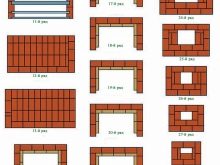
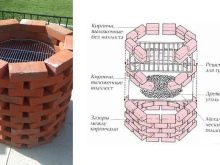
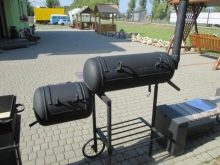
For how to make a Finnish outdoor barbecue oven with your own hands, see the next video.





























































The comment was sent successfully.